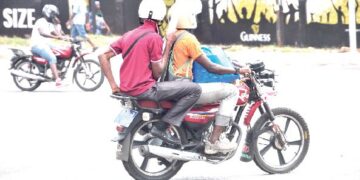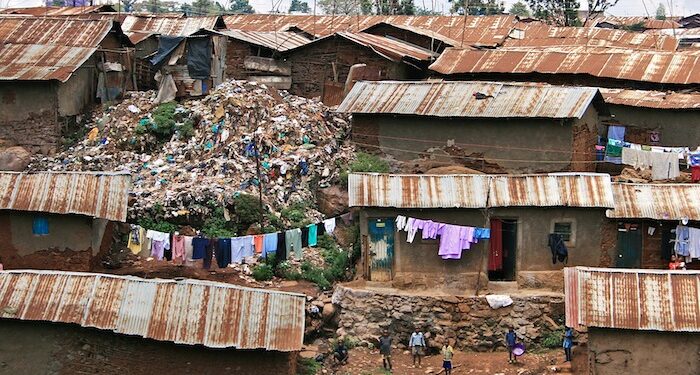Slums, informal settlements typically characterised by inadequate housing, poor sanitation, and limited access to essential services, are a pressing urban challenge across the globe. As highlighted by UN-Habitat (2022), nearly 1.1 billion people lived in slums or slum-like conditions as of 2020, with that number expected to nearly triple over the next three decades.
The Global Picture
The world’s largest slums are located across Asia, Africa, and Latin America, each confronting a range of social, economic, and environmental challenges. Dharavi in Mumbai, India, is one of Asia’s most densely populated slums, housing nearly 1 million people within just 2.1 square kilometres. Despite the overcrowding, Dharavi hosts a thriving informal economy estimated at over $1 billion in daily turnover from sectors such as pottery, textiles, and recycling (UN-Habitat, 2022). In Karachi, Pakistan, Orangi Town is considered the largest slum globally by population density, with over 2.5 million residents. In the absence of formal services, the community took initiative by laying its own sewerage system, demonstrating local resilience (UNstats, 2023).
In Latin America, Rocinha, the largest favela in Rio de Janeiro, Brazil, struggles with poverty and violence despite some infrastructural improvements, while Neza-Chalco-Itza in Mexico City accommodates more than 1.2 million people, many of whom lack secure legal housing and basic services (UNstats, 2023).
Other notable slums include Manshiyat Nasser in Cairo, Egypt—commonly known as “Garbage City”—where approximately 600,000 people rely on informal waste recycling despite hazardous environmental conditions. Ciudad Bolívar in Bogotá, Colombia, hosts over a million residents who suffer from inadequate water supply and public services. In the Caribbean, Cité Soleil in Port-au-Prince, Haiti, with an estimated 400,000 residents, grapples with natural disasters, political instability, and dilapidated infrastructure.
Dharampura in Lahore, Pakistan, faces similar issues to Orangi Town, including extreme overcrowding and poor sanitation (UN-Habitat, 2022; UNstats, 2023).
The African Situation
In Africa, Kibera in Nairobi, Kenya, is arguably the largest slum on the continent, with a population ranging from 200,000 to nearly 1 million. Residents face significant challenges, including access to clean water and sanitation (UN-Habitat, 2022). Apart from Kibera, Kenya is home to other slums such as Mathare, which houses over 500,000 residents who face similar issues, particularly in terms of housing, sanitation, and public health (Amnesty International, 2023); and Mukuru Kwa Njenga, with around 100,000 residents, which faces severe overcrowding and inadequate sanitation.
In Nigeria, slums are not only widespread but also diverse in structure and challenges. Ajegunle, with around 500,000 residents, and Shomolu, home to about 400,000, both in Lagos, are marked by extreme congestion, poor infrastructure, and informal economies. Makoko, perhaps the most visually distinctive slum, is a floating community in Lagos built partly on stilts over a lagoon. Despite housing roughly 300,000 people, Makoko suffers from a near-total absence of sanitation, reliable electricity, and healthcare facilities (The Guardian, 2022).
Further south, Khayelitsha, located on the outskirts of Cape Town, South Africa, is the country’s largest township, home to over 400,000 people. Although some infrastructure development has taken place, Khayelitsha still faces high levels of poverty, crime, and unemployment (South African Cities Network, 2022). Similarly, Alexandra, near Johannesburg, with a population of around 200,000, is challenged by housing shortages, unemployment, and limited service delivery.
Agbogbloshie, located in Accra, Ghana, is notorious not just for its poverty but for being one of the most polluted places in the world. Housing approximately 80,000 residents, it serves as a major electronic waste dump, exposing inhabitants to serious environmental and health risks (Basel Action Network, 2022). Other slums in Ghana include Nima, Maamobi, Old Fadama, Ashaiman, Jamestown, Kojokrom, New Takoradi, Suame Magazine, and Aboabo.
In Angola, Cazenga, a sprawling informal settlement in Luanda, is home to about 400,000 people and is marked by poor sanitation and a lack of public services (UN-Habitat, 2022).
Urbanisation and Slums
As urbanisation accelerates, particularly in the Global South, slums are expanding both in terms of size and number. Africa, experiencing one of the world’s highest rates of urban population growth, is at the epicentre of this phenomenon. This rapid and largely unplanned urban expansion has not only exacerbated poverty and inequality but has also deepened security vulnerabilities across the continent.
In Africa alone, over 265 million slum dwellers were recorded in 2022, a number projected to rise substantially if current trends continue (UNstats, 2023).
Africa’s most populous and vulnerable slums such as Kibera and Mathare in Nairobi; Khayelitsha in Cape Town; Makoko in Lagos, and Agbogbloshie in Accra, exemplify the social, environmental, and security threats posed by unchecked slum proliferation. These areas often lack reliable infrastructure, legal land tenure, clean water, waste management systems, and healthcare services.
Consequently, slum residents suffer from poor health outcomes, economic insecurity, and educational disadvantages, all of which contribute to broader social instability. Slums typically emerge on the fringes of cities where state presence is minimal, leaving a vacuum in which informal power structures and criminal networks thrive. Poverty, desperation, and lack of opportunity can lead some residents to resort to illegal activities as a means of survival (UN-Habitat, 2022).
Slums and Security
Security challenges in African slums are multidimensional. Overcrowding and poverty create fertile ground for crime, gang activity, and social unrest. The limited police presence and poor infrastructure, such as narrow alleys, inadequate lighting, and unplanned housing, make slums difficult to patrol and manage. Crimes like armed robbery, drug trafficking, carjacking, rape, prostitution, vigilantism, contract killing, and various forms of gender-based violence are prevalent. In Kibera and Mathare, for instance, residents frequently cite concerns about muggings, gang violence, and police brutality. In Makoko and Agbogbloshie, the absence of formal governance has allowed illegal economic activities, including drug distribution and e-waste trafficking, to flourish (UN-Habitat, 2022).
Furthermore, the dense and chaotic nature of slums makes them ideal hideouts for criminal elements, including terrorists and traffickers. Overcrowding provides anonymity, allowing individuals involved in illegal activities to blend into the population.
In some cases, slums become havens for terrorist cells or lone wolves seeking to lie low, as state surveillance and law enforcement are minimal. Intelligence agencies have noted that extremist groups and traffickers exploit these vulnerabilities by infiltrating such areas for recruitment, planning, and logistics (UNstats, 2023).
For example, the poor socio-economic conditions and marginalisation in some slum areas in West Africa have been linked to the radicalisation of youth by extremist groups.
Another significant security issue stems from the lack of secure land tenure and legal recognition. In many African cities, slum dwellers live under constant threat of eviction, creating instability and conflict. In the absence of legal protection, residents are often exploited by informal landlords or face demolition without compensation. This contributes to a culture of insecurity, mistrust, and sometimes violent resistance against authorities.
Moreover, land tenure disputes can erupt into local conflicts, sometimes involving criminal syndicates or political actors who manipulate such grievances for their own gain (UN-Habitat, 2022). Additionally, some politicians recruit vigilantes from these slums for hatchet jobs during the political season.
This cornucopia of security concerns and challenges associated with slums poses a potent threat to both national and regional security. For instance, there could be regional terrorist cells or lone wolves hiding among local slum dwellers, surveilling and undertaking various operations on the blind side of the security apparatus. This makes slums a ticking national and regional security time bomb that must be given a hefty amount of attention.
Finding Solutions To Slums
To mitigate these threats, a multi-faceted and inclusive approach to slum upgrading and urban development is essential. Firstly, investing in infrastructure, such as water, sanitation, electricity, and public transport, can drastically improve the quality of life and reduce crime. Programmes like India’s Slum Rehabilitation Authority show that replacing slums with affordable housing can be effective when executed with community participation.
Secondly, empowering slum communities through education, job training, and microfinance initiatives can promote economic stability and discourage criminal behaviour. For instance, in Orangi Town, Pakistan, local residents successfully installed their own sewerage systems, showcasing the power of community-led development (UNstats, 2023).
Environmental initiatives also play a key role in improving security by reducing vulnerabilities to natural disasters and climate-related crises, which often worsen existing social stresses.
Tree planting, waste recycling, and renewable energy projects can foster environmental sustainability while creating jobs.
Furthermore, granting legal recognition and land rights to slum dwellers can reduce the fear of eviction and encourage residents to invest in improving their communities.
Slum dwellers tend to be persons who usually cannot afford the high rents of decent housing in the major cities. Many are migrants seeking jobs who find these places less expensive to live. However government programmes to integrate them into the national economy through provision of jobs would help improve opportunities and cooperation with government.
Finally, integrating slum areas into broader city planning and governance structures can bridge the gap between informal and formal systems, ensuring that slum residents are no longer invisible to policymakers.
Conclusion
Slums are not merely a manifestation of poverty and underdevelopment—they are a significant and growing security concern. The challenges they present, particularly in Africa, are intertwined with issues of governance, infrastructure, inequality, and criminality. Addressing slum proliferation is, therefore, not just a humanitarian imperative but also a strategic security priority. It also important for national planning authorities to be firm in ensuring that slums are not allowed to grow. It is in many instances, the lack of exercise of the authority of local authorities that engender slum development. Governments, international organisations, and local communities must collaborate to transform slums into inclusive, resilient, and sustainable neighbourhoods. By doing so, we can not only uplift millions out of poverty but also safeguard urban, national and regional security from the potpourri of threats that unchecked slum growth poses.
References
UN-Habitat. (2022). World Cities Report 2022: Envisaging the Future of Cities. Nairobi: United Nations Human Settlements Programme.
UNstats. (2023). Sustainable Development Goal 11: Make cities and human settlements inclusive, safe, resilient and sustainable. United Nations Statistics Division. Retrieved from https://unstats.un.org
UN-Habitat. (2020). Slums: A Growing Global Challenge. UN-Habitat Urban Data Portal. UN-Habitat. (2023). Informal Settlements and Security Risk: A Global Perspective. Nairobi: United Nations Human Settlements Programme.






























